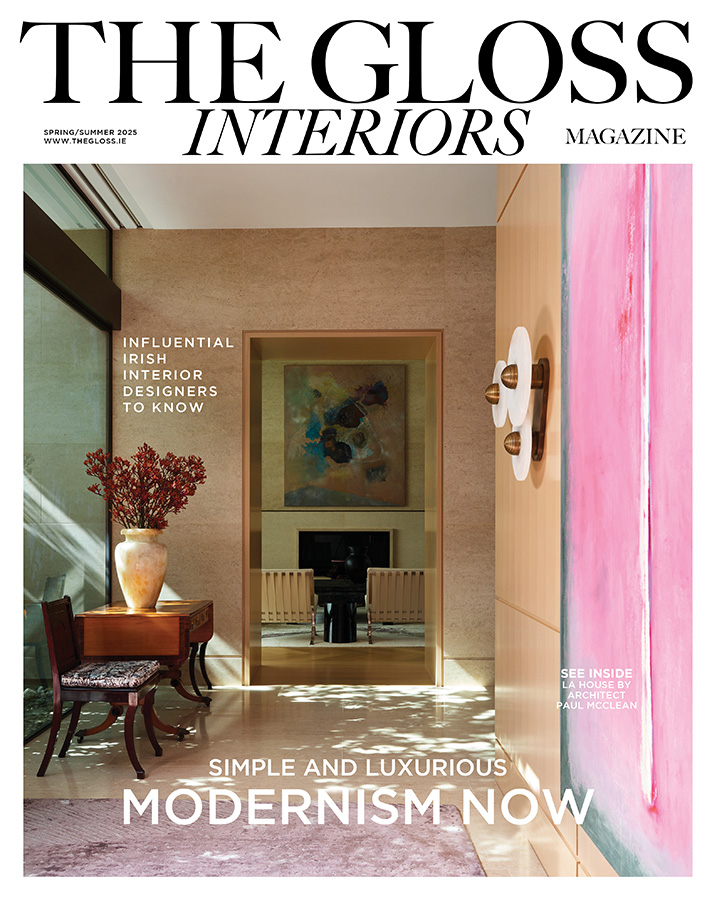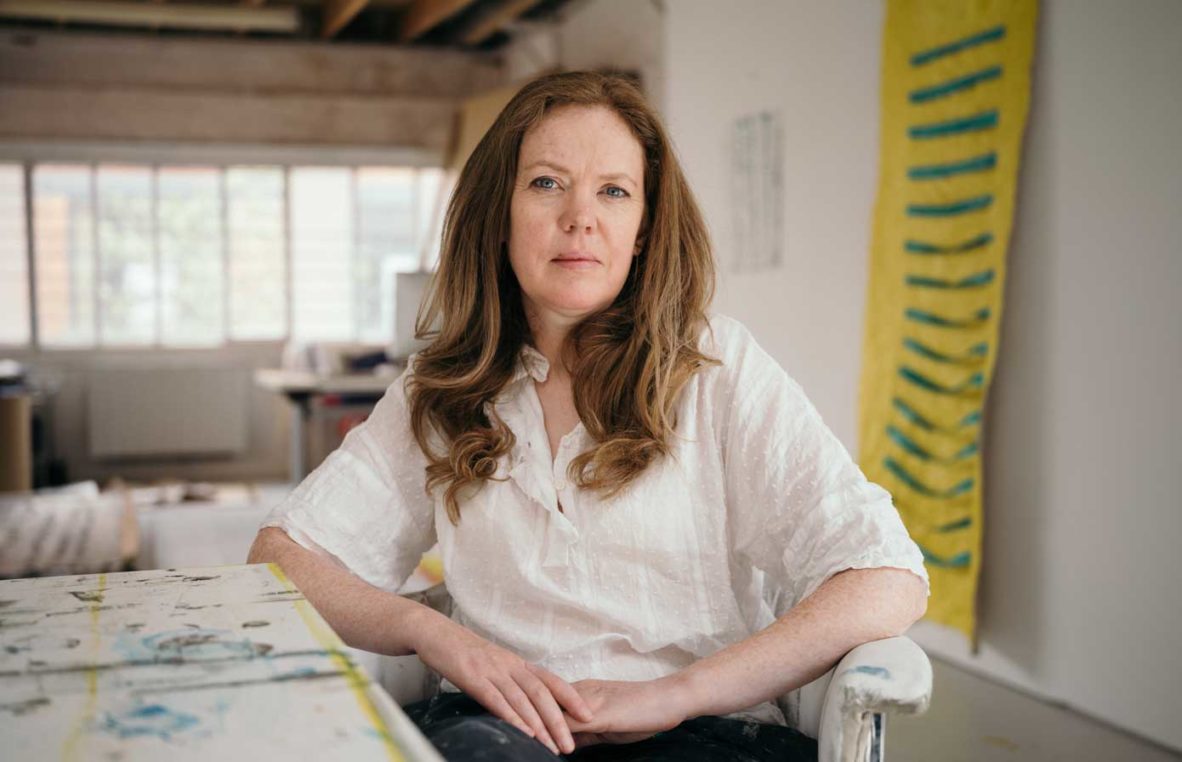The work of the Galway-born, London-based artist Laura Gannon oscillates between drawing, sculpture, painting and film …
How do you define your work?
I am interested in storytelling and architecture and design. My films are a way of telling stories of buildings and female creativity. These films have been set in locations from Eileen Gray’s E1027 house in France, to a former converted stable in Goleen, West Cork to my current film set in a church in Connemara. They all feature female narratives describing how they made architecture and design. My films mark a parallel to my works on linen with their articulation of temporality, light, space and the act of looking and feeling.
The studio works feature punctures, apertures and interwoven elements painted in bold, simple inks and acrylic. They oscillate between sculpture and painting. There is an element of what I term “psychological data” embedded in the work. It means what I am reading and thinking about at the time is present through colour and line. Through reduction and repetition, I hope these sculptural paintings are imbued with fragility and sensuality.
Reading stories is something that inspires me, and often informs the titles of the works. Recently I have been reading Clare Keegan, Joan Didion and Lydia Davis. Often I am thinking of their stories and essays that either have a starting point in existing realities, or create cinematic, visual environments which include architecture and landscape.
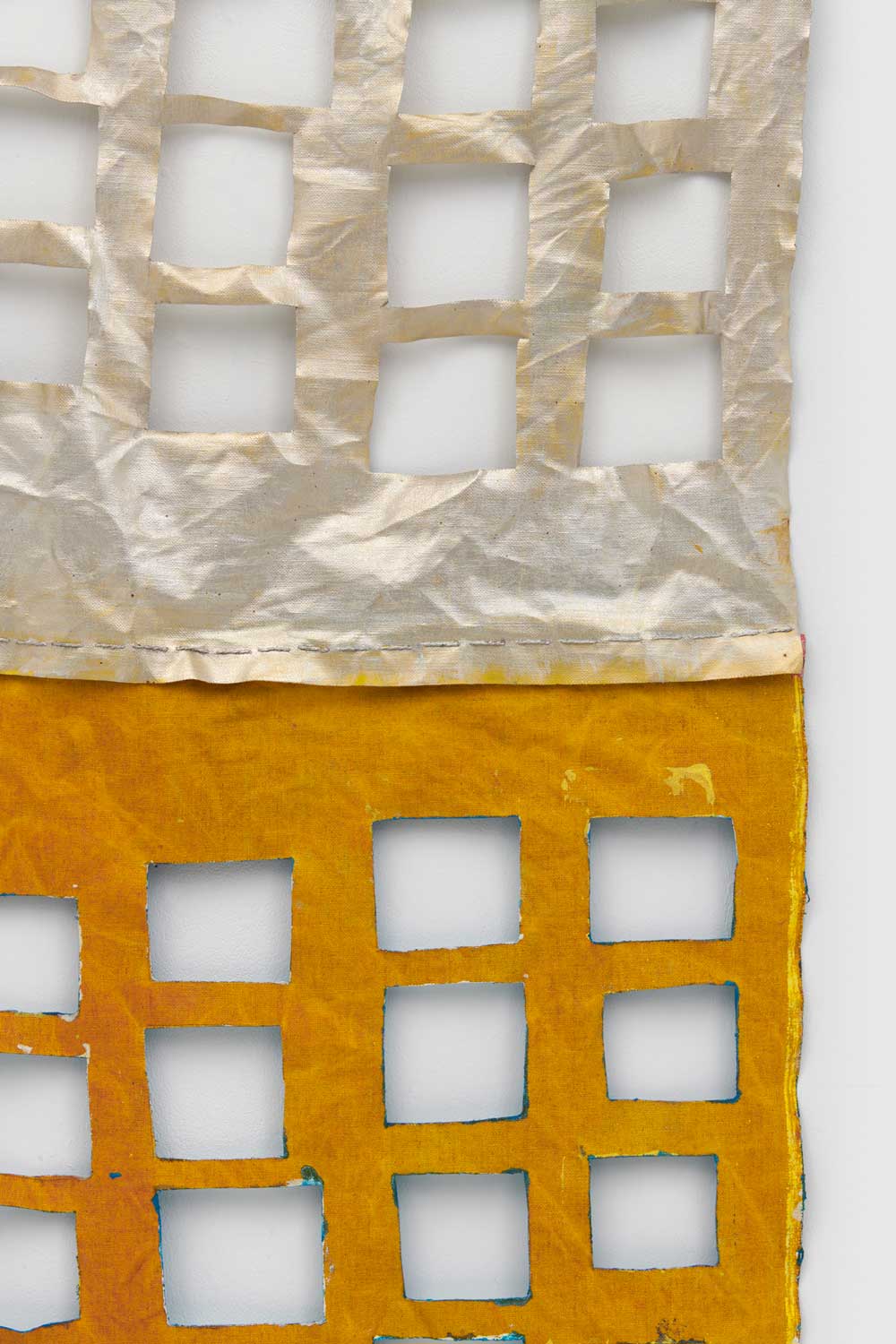
Your new works are seemingly fragile and incorporate folding and bending paper and linen …
The artist linen is finely woven and that makes the works surprisingly strong even though they look fragile. The bending and folding shows the presence of making and the intimacy of the hand to give a sculptural finish. The surface is reworked until it contains its own shape. There is an elemental aspect to the work – the greens and blues and silvers, have some memory of sky and rock. I grew up in Mayo so the rural landscape and changing light patterns were my first visual memories.
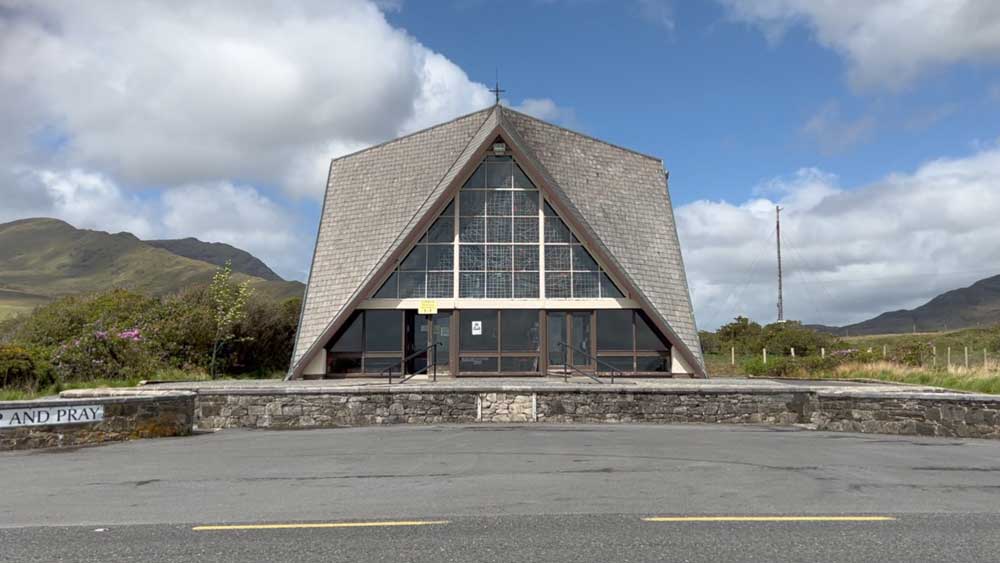
Your new exhibition features the film Glass House, what was your inspiration for this?
Glass House is filmed in Our Lady of the Wayside, a modernist church in Connemara, built in 1968. I had seen it from the outside as a teenager, it was one of the first modern, architect designed buildings that I saw. A few years ago I decided to revisit it and finally go inside. Since then, I found out about its history, how Irish migrants sent money home to help build it. I was looking at modernism in a peripheral landscape in the west of Ireland. In the 1960s in Ireland, the church was one of the few patrons commissioning architects to design buildings. The building therefore was one of the few examples of contemporary architecture from that time in that location.
The stained glass window was designed by Phyllis Burke. I recorded her voice which provides the narrative. She has made a huge contribution to Irish modernism as she explored abstraction in glass as well as figuration. She has an immense knowledge of how to combine colour and light. Her stained glass can also be seen internationally including her first commission for a Nigerian church.
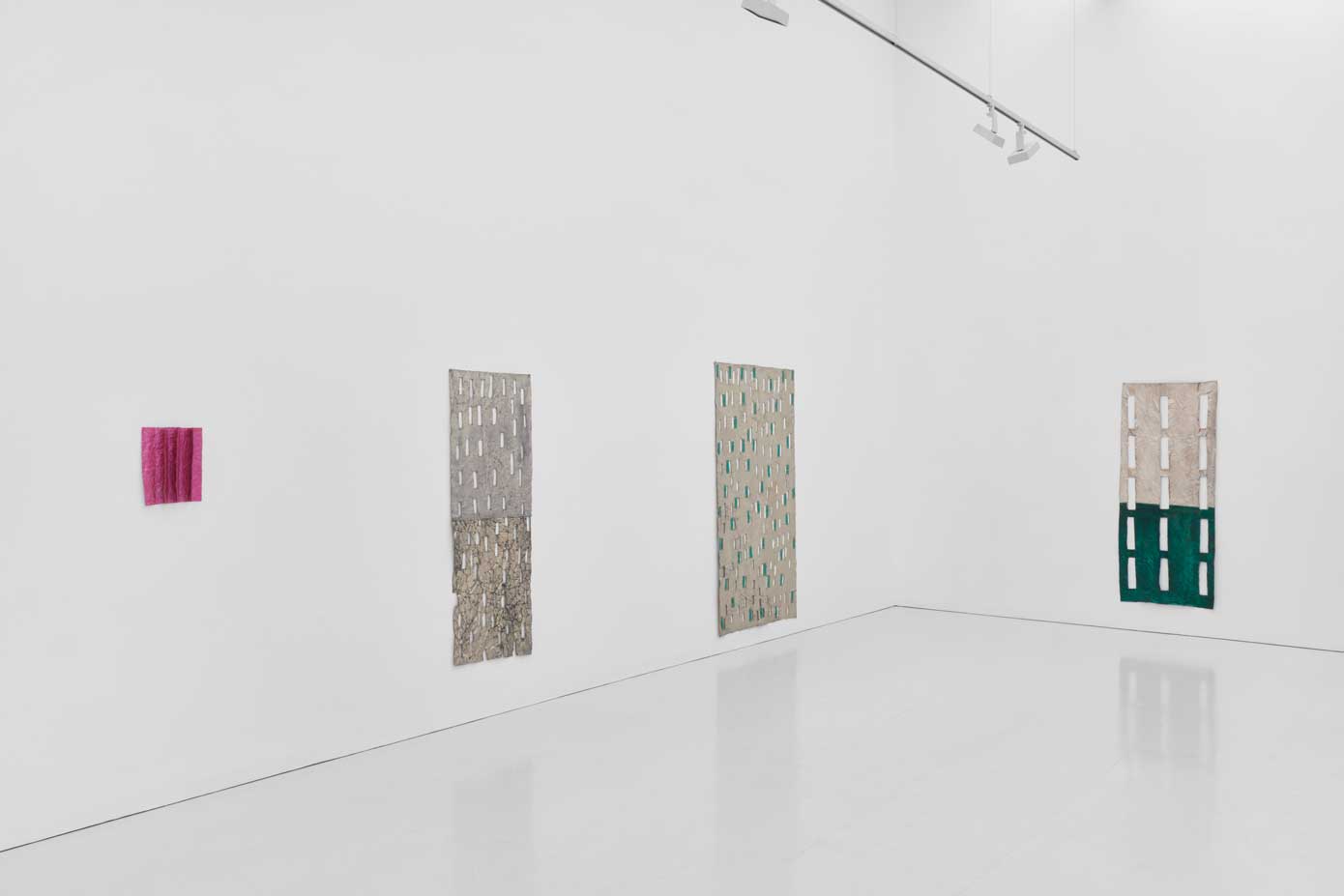
How do your new artworks and film combine?
In film I use daylight to capture both the interior and exterior of buildings. The shift in the light and passing clouds create movement and reflections on the window surfaces. These reflections create a doubling of images which allow the viewer to see both the interior and the exterior reflected on the glass surface.
The painted works in linen are an articulation of temporality, light, space and the act of looking and feeling. The metallic surfaces of the paintings also change with the light so there is a crossover between the film and painted surfaces when shown together.

I believe you will be taking part in a performance on July 10 inspired by your research into Eileen Gray?
Yes, I continue to research Eileen Gray’s work. She was such a fully-formed thinker, combining the visual, the sensual and the intellectual aspects of creativity. She continued to engage with new materials throughout her life. This commitment to the new, as well as thinking about how to make work that is comfortable for the body means that she is always relevant. For example, she was using celluloid to make a screen in 1931 shortly after the material was used for film. I first saw this curved screen in the IMMA exhibition in 2013. I am working with designer Staf Schmool and sound artist Susan Stenger. We will all perform a 15 minute performance called We are Eileen. Susan is composing a new audio composition focusing on Gray’s materials including metal and fabric. Staf and I will present our live research. Our conversation as an artist and designer allows us to consider her creativity from different perspectives reflecting our own disciplines.
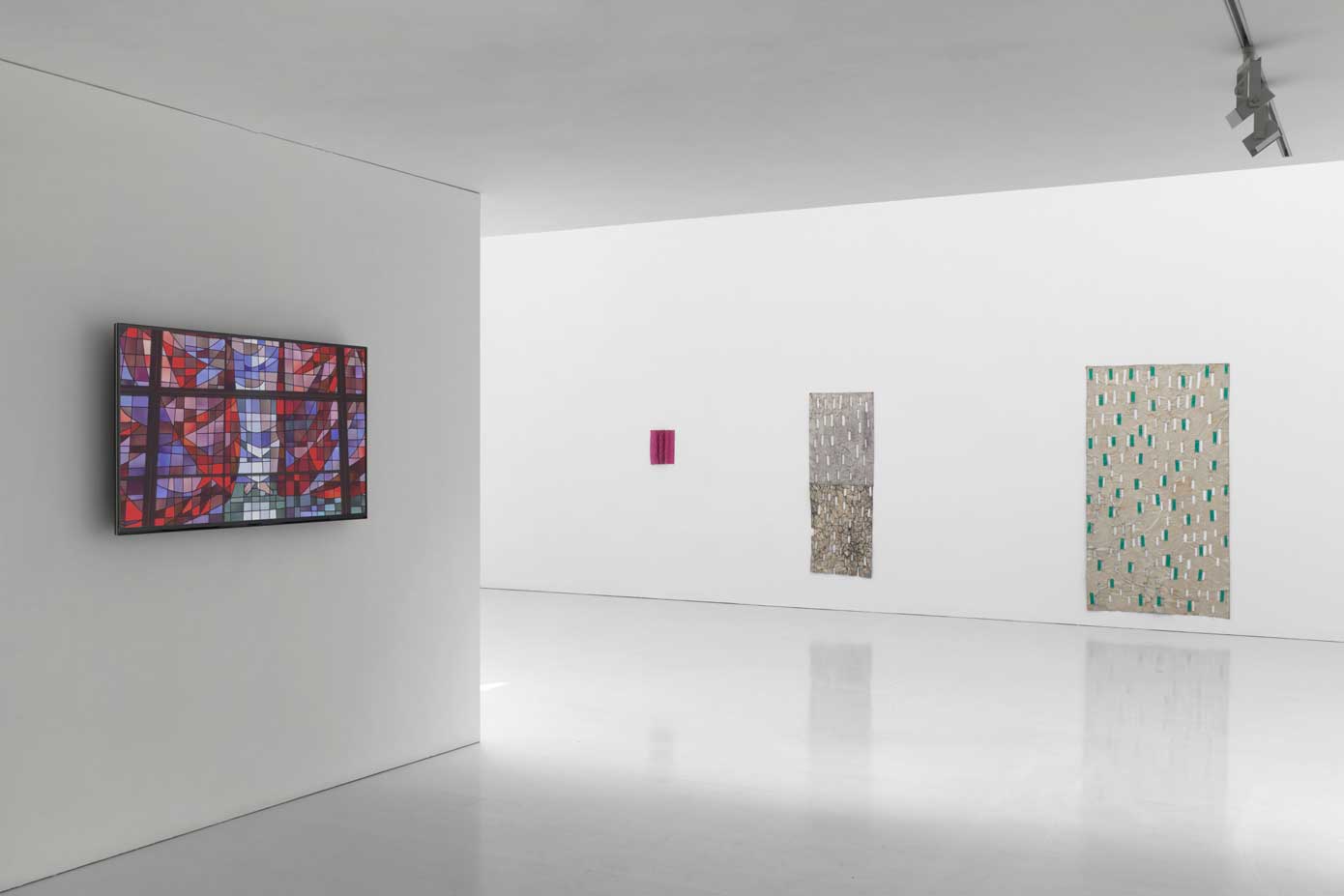
Where and how do you work?
I mainly work in my studio in east London, alongside a small group of artists. The energy of working alongside other creatives is always inspiring – you can work alone and yet have company and conversations. It’s near Victoria Park which is great for taking a break and a walk through the trees.
My works are made over time using pieces of raw linen, inks and acrylic. I work on the floor and start by rolling out some linen canvas and cutting it by hand. Then I add layers of paint. I work into the surface cutting out sections and creasing the linen. This is a process of adding a sculptural dimension. I work on two to three works at a time. Sometimes when a work isn’t resolved, it’s set aside and I return to it at a later date, even up to a year and remake it until it’s finished. This way of working adds time as a material to the work. I mainly use metallic paints as they change with the light and the works look different depending on the time of day as the daylight shifts.
In Ireland, I spend time in the countryside in West Cork where my husband is from. We travel over and back about three times a year. While I’m there I make smaller watercolour drawings, which are easy to make at a table.
Need to Know: Laura Gannon’s second solo exhibition is at Kate McGarry Gallery, 27 Old Nichol Street, London until July 23; www.katemacgarry.com.
Main featured image: The portrait photograph of Laura Gannon is by Lewis Ronald.




